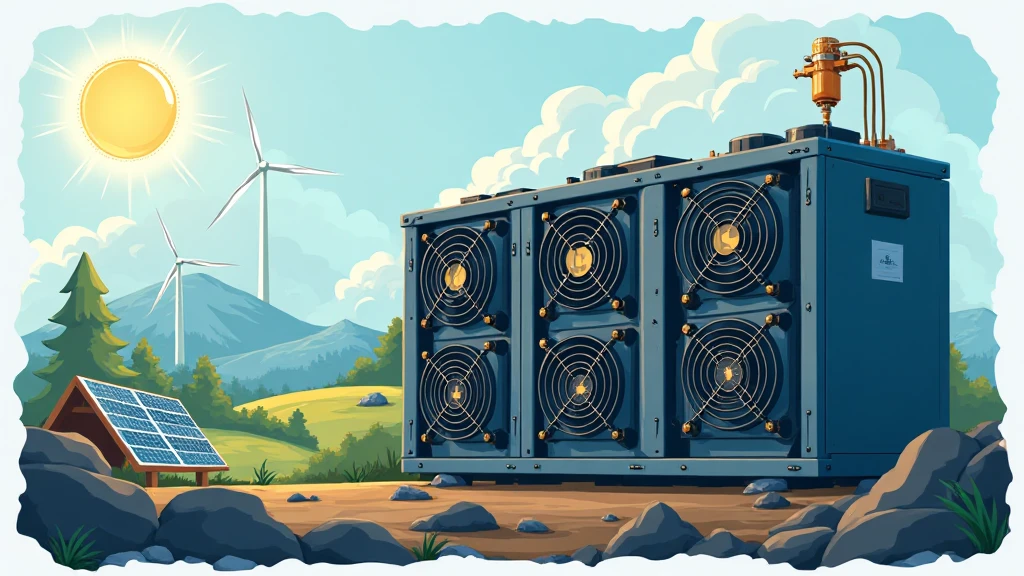Optimizing Bitcoin Mining Rig Energy Consumption: Trends & Strategies
With the explosive growth of the cryptocurrency market and the increasing costs of electricity, optimizing energy consumption in Bitcoin mining has never been more essential. The phenomenon of Bitcoin mining has garnered both supporters and critics due to its high energy demands. In 2024, it was reported that Bitcoin mining accounted for approximately 0.5% of the total global electricity consumption, as highlighted by studies from the Cambridge Centre for Alternative Finance. Improving energy efficiency is crucial not only for profitability but also for sustainability in the blockchain ecosystem.
Understanding Bitcoin Mining Energy Consumption
Bitcoin mining is the process of validating transactions and securing the Bitcoin network, which requires substantial computational power. Here’s a simple breakdown:
- Hash Rate: The speed at which a mining rig can solve cryptographic puzzles.
- Energy Input: The amount of electricity consumed to maintain the hardware and perform calculations.
- Market Conditions: The price of Bitcoin influences the potential revenue against energy costs.
What Drives Energy Consumption?
Each Bitcoin transaction requires a significant amount of computational power, leading to high energy consumption rates. Factors contributing to this energy use include:

- Hardware Efficiency: The type of mining rig used plays a huge role.
- Cooling Systems: Mining rigs generate heat, requiring additional energy for cooling.
- Electricity Costs: Varying rates of electricity can significantly affect miner’s profitability.
Energy Efficiency Strategies for Mining Rigs
Optimizing energy consumption in Bitcoin mining can be approached through various strategies. Below are essential methods every miner should consider:
1. Selecting the Right Equipment
Investing in more energy-efficient hardware can yield significant savings. Look for the latest ASIC miners with lower power consumption and higher hash rates. Here’s a comparison of popular mining rigs:
| Mining Rig | Hash Rate (TH/s) | Power Consumption (W) | Efficiency (J/TH) |
|---|---|---|---|
| Antminer S19 Pro | 110 | 3250 | 29.5 |
| Whatsminer M30S | 86 | 3400 | 39.5 |
| Bitmain Antminer S19j | 90 | 3250 | 36.1 |
Data source: Manufacturer specifications
2. Utilizing Renewable Energy
When considering sustainability, tapping into renewable energy sources like solar, wind, or hydroelectric power can significantly lower your operational costs and carbon footprint. Recent studies show that approximately 50% of miners in Vietnam are exploring renewable energy options to power their operations, driven by both environmental awareness and economic incentives.
3. Cooling Solutions
Efficient cooling systems are vital in reducing energy consumption. Evaluating air or liquid cooling methods, as well as utilizing free-cooling techniques in suitable climates, can drastically lower energy costs. You can also consider:
- Implementing advanced thermal management technologies.
- Utilizing natural cooling environments.
Monitoring and Adjusting Operations
For effective energy optimization, continuous monitoring of mining operations is essential. Implementing software tools that track energy consumption and operational performance can lead to more informed decisions. Here’s what to consider:
- Reviewing power consumption trends to identify inefficiencies.
- Adjusting mining intensity based on electricity costs.
Local Regulations and Compliance
Understanding the regulatory landscape in Vietnam regarding crypto operations can prevent legal complications. As the market matures, compliance with regulations such as tiêu chuẩn an ninh blockchain is imperative to safeguard against penalties.
Future Trends in Bitcoin Mining Energy Efficiency
The future of Bitcoin mining will likely involve greater emphasis on energy efficiency. Potential trends for 2025 include:
- The rise of more efficient mining hardware technologies.
- Increased adoption of AI for optimizing energy usage.
- Greater integration of blockchain solutions to track energy consumption.
As market demands evolve, miners must stay ahead of technology and regulatory changes to maximize profitability while maintaining sustainable practices.
Conclusion
In conclusion, optimizing Bitcoin mining rig energy consumption is not only a matter of improving profitability but also of aligning with global sustainability efforts. By selecting efficient hardware, exploring renewable energy options, and continuously monitoring performance, miners can significantly reduce their energy footprints. The landscape of Bitcoin mining is ever-changing, and successful miners will undoubtedly adapt to these innovations and challenges ahead.
For ongoing insights and updated tools regarding energy optimization in Bitcoin mining, visit HIBT. Stay informed and optimally equipped to navigate the future of mining energy consumption.
Expert Author: John Smith, a blockchain technologies specialist, has published over 20 papers in the field of cryptocurrency and energy efficiency. He has led compliance audits for significant blockchain projects in the Asia-Pacific region.


